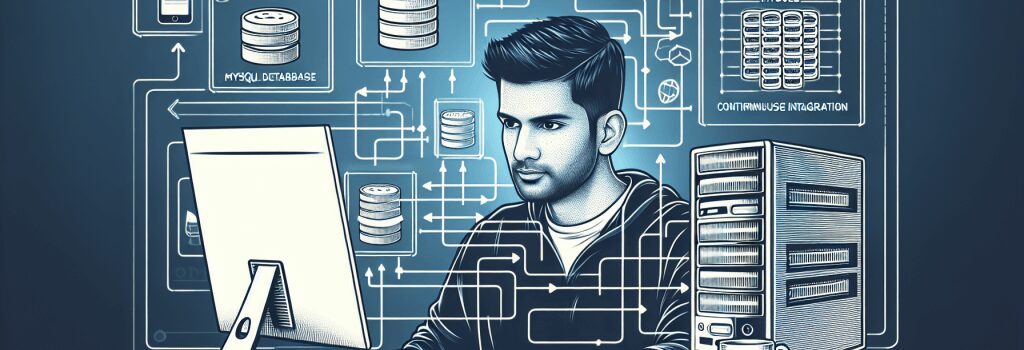MySQL Continuous Integration for Streamlined Web Development

Alright beginners, gather ’round because we are about to dive into an ocean less explored but of great significance. We’re talking about ‘MySQL Continuous Integration for Streamlined Web Development’. If it sounds like I’ve just thrown a handful of random English words paired with slangs from Mars, stay tuned. Let’s unravel it all!
What the heck is MySQL Continuous Integration?
In the web development universe, ‘MySQL’ is the superhero that manages your databases and ‘Continuous Integration’ (CI) is its trusty sidekick making sure everything runs smoothly. CI is nothing but a practice that developers follow, namely integrating their changes back to the main branch of a project as often as possible. It’s a bit like a group assignment. You don’t want that one teammate who comes in last minute with all their work, causing a mismatch, do you?
The beauty of Continuous Integration in MySQL
Continuous Integration brings all code changes together and ensures they work well. No surprises when everything has been put together. With CI, if a bug sneaks in, it can easily be detected because of frequent code integration.
It’s like seeding and reaping. You throw some seeds (code) into a field (repository) little by little. If some seeds don’t sprout (fail to integrate), it’s easier to find out which seeds (code) were bad and replace them before the whole field (project) is affected.
Why use MySQL Continuous Integration for Web Development?
Imagine building a jigsaw puzzle. It’s easier to piece together when you frequently check how the pieces you are placing connect with the bigger picture. In the same way, CI is a perfect companion for web development.
Adding to this, MySQL, in its gallant armor, interacts with the PHP of your web application. It stores and retrieves data when needed. Think of it as a big storage room of a library. Books(PHP data) are kept in an orderly fashion allowing you to retrieve information at your beck and call.
Let’s know the characters
Your tools
There are several tools available for CI implementation, like Jenkins, GitLab, Travis CI, etc. They are like different supermarkets. You choose which one is closer, cheaper, and has your favorite cookies.
The CI Tool, PHP, MySQL triangle
In regular checks of continuous integration, your chosen tool will checkout code for the master repository, spin up your PHP environment, import your MySQL databases, run any new migrations, and get everything ready for running the checks. Think of it as rolling out the red carpet before the main show.
To sum it all up
It may seem like a lot to wrap your head around initially, but figuring out MySQL Continuous Integration for your web development routine is like learning to eat with chopsticks. It’s tricky at first, but once you get the hang of it, you’ll be picking up morsels of success seamlessly. So go ahead, dive in, and may the forces of PHP, MySQL, and CI be at your fingertips.


